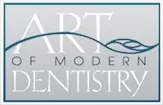Wisdom Teeth
Wisdom teeth, the four molars at the ends of the jaws on both sides, are the last teeth to form in the adult mouth. They may appear at any time from late puberty to early adulthood. They are the teeth most varied in size and shape. Most adults have four but some have fewer and some adults develop more than four. It is not unusual for wisdom teeth to affect other teeth, sometimes becoming impacted by developing at angles in the direction of the adjacent second molar. In many cases extraction is the only course of action and is so common that it’s considered a norm these days.
Why do we Have Wisdom Teeth
Wisdom teeth are vestigial molars from when humans had larger jaws with more teeth. As human diets developed and changed, smaller jaws gradually evolved, yet wisdom teeth remained as unnecessary supernumeraries, similar to our appendix.
Issues With Wisdom Teeth
Wisdom teeth have long been identified as major sources of dental problems. They are by far the teeth most commonly impacted. Inadequate space for them to erupt raises risks of periodontal disease and dental cavities. In some situations wisdom teeth develop normally, but after a few years complications may arise. Of people over the age of 65 fewer than 13% of the population retain their wisdom teeth without any issues.
Not all wisdom teeth must be extracted. When it erupts cleanly through the tissue without compromising the adjacent tooth, the wisdom tooth can be retained in the mouth with little concern as long as thorough brushing, flossing, and cleaning are possible. Extraction is necessary if the tooth erupts only partially through the gingival tissue, causing inflammation or infection. A soft-tissue growth over a wisdom tooth partially erupted is an operculum. Bacteria under the operculum can cause pericoronitis, a dangerous infection.
With there is sufficient space present and no obstacles blocking the wisdom teeth they are able to come in without difficulty and correctly without the need for extraction. However even wisdom teeth that develop correctly can cause issues down the line as they can be difficult to keep clean, free of bacteria and plaque and are more prone than other teeth to tooth decay and gum disease.
Impaction Problems
Impactions cause many problems, destruction of jaw bone tissue and of adjacent teeth, pathologic lesions, even jaw fracture, among them. Impactions can cause inflammation or infections of the gums where these teeth erupt or decay from bacterial infiltration in the spaces between teeth worn by attrition.
Classifications of impacted wisdom teeth are based on direction and depth of impaction, amount of space available for eruption, and amount of soft or bone tissue covering them. Classifications allow clinicians to estimate the probabilities of infections and complications from extractions.
Pericoronitis, a common indicator for emergency extractions, typically happens when the lower jaw lacks enough room for all its teeth. Symptoms are red, inflamed gum tissue behind the last visible molar, pain with biting on the back teeth, and swelling of gum and cheek tissue around the affected side of the jaw.
A wisdom tooth can erupt at an angle that makes the adjacent molar difficult to keep clean. The position of the wisdom tooth may cause deep periodontal pockets around the adjacent tooth. Then extraction is imperative to prevent damage to the much more important second molar.
The Extraction Procedure
For extraction, an oral surgeon administers local anesthesia to pull the tooth without undue discomfort. Many patients choose conscious sedation, a drowsy state which blocks pain signals. A minor surgery then removes tissue around the wisdom tooth for a clean extraction from the tooth socket. Several sutures close the surgical site to promote tissue healing.
Recovery
Initial recovery from wisdom tooth extraction trauma takes three to five days; slight bleeding and then oozing from the wound over the first 24 hours is normal and no cause for alarm. Pain medication palliates postoperative discomfort. The patient eats soft foods for a few days and should avoid tobacco, alcohol, and excessive exercise. Complete healing takes up to three weeks.




